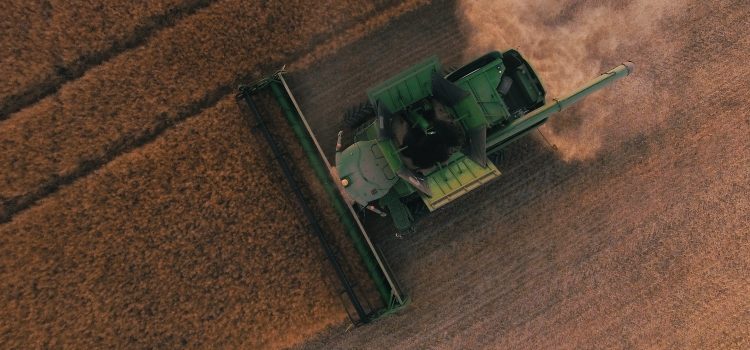
Introduction
As our population grows, the demand for food production increases. However, with this increasing demand comes an increased risk of agricultural diseases that can devastate crops and harm farmers’ livelihoods. Fortunately, there are innovative tools available to help manage these diseases. In this blog post, we’ll explore two such tools: biocontrol and gene editing. We’ll discuss their differences, advantages, and disadvantages to provide a comprehensive look at how they can be used to improve agriculture’s resilience in the face of disease outbreaks.
Biocontrol
Biocontrol is a method of managing agricultural diseases that involves the use of living organisms to control pests and reduce damage to crops. These organisms can be predators, parasites or pathogens that target specific pests.
The concept of biocontrol has been around for centuries, with farmers using natural enemies like ladybugs to control aphids. However, modern biocontrol techniques have become more sophisticated and effective.
One example is the use of Bacillus thuringiensis (Bt), a bacterium that produces toxins lethal to certain insects. Bt has been genetically engineered into crops such as corn and cotton, providing built-in pest resistance.
Another example is the use of pheromone traps, which lure male insects away from females in order to disrupt their breeding cycle.
Biocontrol methods are generally considered environmentally friendly because they involve natural predators rather than synthetic chemicals. They can also be cost-effective over the long term since they do not require repeated applications like chemical pesticides.
Biocontrol offers an innovative tool for managing agricultural diseases while minimizing negative impacts on the environment and human health.
Gene Editing
Gene Editing is a cutting-edge technology that enables scientists to modify the DNA of living organisms with precision. This innovative tool has the potential to revolutionize agriculture by providing new ways to manage and control diseases.
One of the most prominent examples of gene editing in agriculture is the development of disease-resistant crops. By modifying certain genes, scientists can create plants that are more resistant to pests and diseases, reducing the need for harmful pesticides and herbicides.
Another application of gene editing in agriculture is in animal breeding. Scientists can use this technology to select specific traits, such as increased milk production or resistance to certain diseases, resulting in healthier and more productive livestock.
Despite its promising potential, gene editing also raises ethical questions regarding its impact on biodiversity and unintended consequences for ecosystems. Additionally, there are concerns about how these modified organisms may affect human health if consumed.
While gene editing offers exciting possibilities for managing agricultural diseases, it’s important that we proceed with caution and carefully consider its implications before widespread implementation.
Comparison of Biocontrol and Gene Editing
Biocontrol and gene editing are two innovative tools used in managing agricultural diseases. Biocontrol involves the use of natural enemies like microorganisms or predators to control pests that cause crop damage, while gene editing refers to the precise modification of an organism’s DNA using biotechnology tools.
One significant difference between biocontrol and gene editing is their approach to disease management. Biocontrol relies on natural processes, whereas gene editing involves scientific intervention. While both methods aim for sustainable pest-management solutions, they differ in terms of time taken for implementation and effectiveness.
Biocontrol may take a longer time to show results as it depends on several factors such as environmental conditions, host specificity among other factors. On the contrast, Gene-editing shows quicker results but requires extensive research before application.
Another distinction between these techniques lies in public perception. The use of genetically modified organisms has raised concerns about food safety due to possible long-term effects on human health and the environment compared with bio-controlled methods that rely more on naturally-occurring microbes or predator species.
Both bio-control and gene-editing present unique advantages depending upon what one wants from them; however, each method has its limitations which require careful consideration before adoption into farm systems.
Advantages and Disadvantages of Biocontrol and Gene Editing
Biocontrol and gene editing are two innovative tools for managing agricultural diseases. Both methods have their own advantages and disadvantages, which should be considered before deciding which approach to take.
Biocontrol has several advantages over traditional chemical pesticides as it is a natural process that does not harm the environment or human health. Biocontrol agents can also adapt to changing environmental conditions better than chemicals, making them more effective in specific situations. However, biocontrol may not always be successful in completely eradicating pests or diseases due to factors such as resistance development or lack of availability of suitable biocontrol agents.
On the other hand, gene editing offers precise and targeted solutions for disease management by altering specific genes responsible for susceptibility to certain pathogens. Gene editing allows scientists to create crops with improved resistance without introducing foreign DNA into the plant’s genome. However, there are concerns about potential unintended consequences of genetic modification on ecosystems and biodiversity.
Another advantage of gene editing is its potential for reducing the use of chemical pesticides while ensuring crop yields remain high. The technology also holds great promise for creating drought-resistant crops that can thrive in harsh environments where water scarcity is a major concern.
Both biocontrol and gene editing offer unique benefits and drawbacks when it comes to managing agricultural diseases. It ultimately depends on individual circumstances such as availability of resources, type of pest or disease being managed, and environmental impact assessments when deciding which method to adopt.
Conclusion
Innovative tools for managing agricultural diseases have come a long way, from the traditional methods of using synthetic pesticides and herbicides to more advanced approaches like biocontrol and gene editing.
Biocontrol is a promising approach that uses natural agents to control pests and pathogens. It has proven effective in reducing crop losses caused by different plant diseases. Gene editing, on the other hand, offers a revolutionary method for improving the resistance of crops against various pathogens by directly changing their genetic makeup.
While both methods have advantages as well as disadvantages, it’s clear that they offer significant promise in addressing some of the most pressing issues facing agriculture today. The use of innovative technologies such as these not only reduces dependence on harmful chemicals but also ensures food safety while promoting sustainable agriculture practices.
As we move into an era where population growth is putting increasing pressure on global food systems, it’s essential to explore new avenues for managing agricultural diseases. Biocontrol and gene editing are two examples of how science can help us achieve this goal without compromising quality or quantity. With continued research and development efforts in these areas, we can look forward to even better solutions that will benefit farmers globally while protecting our planet’s health.










